“Yes, yes, track 29!” answers the shoeshine boy. How many of you remember this 1941 song immortalized by the Glenn Miller and His Orchestra headlined by Tex Beneke, Paula Kelly and the Modernaires? The song was featured in the 1941 movie Sun Valley Serenade and became the first gold record awarded by the recording industry.
Click here to watch the video Glenn Miller – Chattanooga Choo Choo.
The Germans knew the only way to defend against an Allied invasion of Europe was to contain the invading army on the beaches before a permanent foothold could be gained. Failing that, the Allied ground troops would be able to expand its footprint, breakout, and begin their march to Berlin. As soon as the troops hit the beaches, German high command knew they would need to mount a rapid response with rail providing the transportation of troops as well as armaments, munitions, and other supplies.
Allied senior officers were one step ahead of the Germans. They anticipated the enemy’s next move immediately after the landings and their countermove was known as “Operation Chattanooga Choo Choo.” (Not to be confused with the 1946 “Operation Choo Choo” mission.)
ADVANCE NOTICE FOR
MY HALLOWEEN 🎃 PRESENTATION
30 OCTOBER 2024
“Cemetery Crawl: Unearthing Parisian Legends”
Meet Some Interesting Occupants
BONJOUR PARIS
Bonjour Paris members click here.
Non-members click here, $10 fee.
Did You Know?
Did you know that six years ago, an American business executive who lives in China went to the airport for a flight to San Francisco? He got to the airport and was told he couldn’t leave the country. All the border officials told him was, “You know what you did.” Turned away, he tried another airport and was met with the same response. This man is still trapped in China.
He was the target of China’s exit ban, a legal tool used by the Chinese government to keep foreign businesspeople from leaving the country. They are never accused of a crime. It’s usually a case of a business dispute or a debt where the other side (usually a Chinese citizen) has complained to the government and the travel ban is issued.
This caught my eye because it was a reminder of France’s ancien régime and the Lettres de cachet signed by the king. This was an official document that allowed the detention, imprisonment, or execution of an individual without a trial or appeal. It usually originated with a complaint from someone followed by a cash payment to the king. During the Estates General of 1789, the Third Estate’s demand for the elimination of the Lettres de cachet became one of the underlying issues that led to the French Revolution. (Refer to my book, Where Did They Put the Guillotine? Versailles to the Faubourgs: 1789−1794, Volume One.)
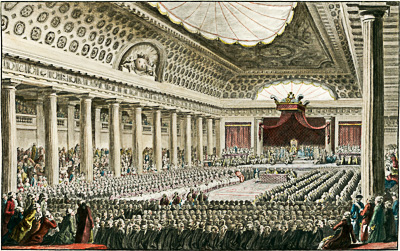
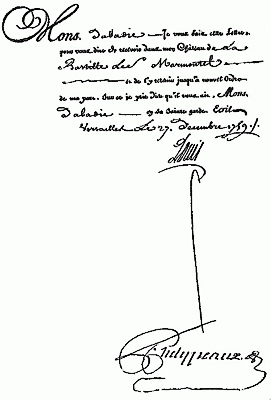
Operation Chattanooga Choo Choo
‘Operation Chattanooga Choo Choo’ (“Choo Choo”) was the May 1944 Allied air offensive taken against moving trains in Europe. It was part of a greater plan known as the “Transportation Plan” (i.e., the disruption and destruction of German transport and communication arteries). Although fighter planes had attacked trains and rail lines in the past, it was always with trepidation due to concern over killing innocent civilians. However, as D-Day (6 June 1944) approached, Allied command was convinced that civilian passenger rail travel had ceased and wholescale attacks were ordered based on the assumption the trains were carrying troops and armaments into France to thwart an Allied invasion of Europe.
The air offensive was a combined effort of the Allied Expeditionary Air Forces led by Air Marshal Sir Trafford Leigh-Mallory (1892−1944) and supported by Lt. Gen. James Doolittle’s (1896−1993) 8th United States Army Air Force (USAAF). The mission’s objective before and after D-Day was to reduce the quantities of German equipment and men moved to France by Hitler to reinforce existing German forces fighting an Allied invasion on the beaches and the subsequent attempt to breakout.
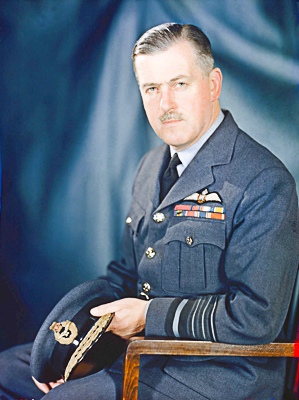
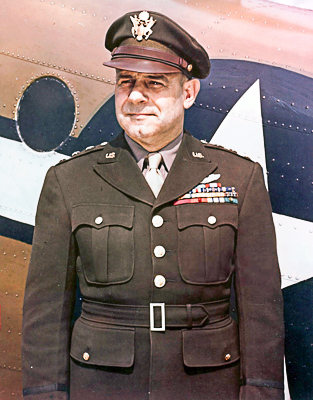
The first attacks by Choo Choo took place on 21 May 1944. The targets in Western France were railway facilities, marshalling yards, bridges, and rolling stock. Mobile rail stock was strafed and destroyed by fighter planes while the marshalling yards and bridges were attacked by fighters and medium bombers.

Two weeks after the first attack, about 475 locomotives had been destroyed and the French rail system in the targeted area had been cut at 150 strategic different points.
Click here to watch the video Operation Chattanooga Choo Choo.
Fighter Bombers
Leigh-Mallory’s command included the British 2nd Tactical Air Force (“2TAF”) led by Air Marshal Sir Arthur Coningham (1895−1948) and Lt. Gen. Lewis Brereton’s (1890−1967) 9th USAAF. Supporting Leigh-Mallory’s bombers were Doolittle’s fighter planes including new P-51s. Formed in June 1943, the 2TAF was to prepare bomber and fighter commands for the invasion of Europe. In January 1944, Coningham took over command and installed the fast moving ground warfare strategies he successfully employed in North Africa and Italy. Planes used by the 2TAF included medium and light bombers as well as attack fighters such as the Spitfire. When formed, 2TAF’s primary functions were to support army ground troops and establish air superiority. (By 1944, the German Luftwaffe was essentially a shell of what it once had been, and Hitler had lost confidence in Hermann Göring.)
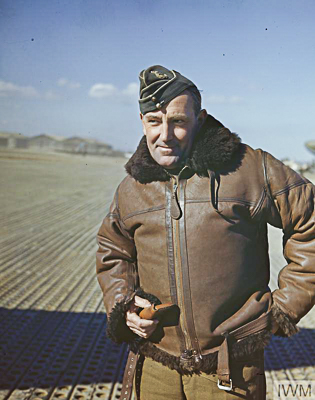
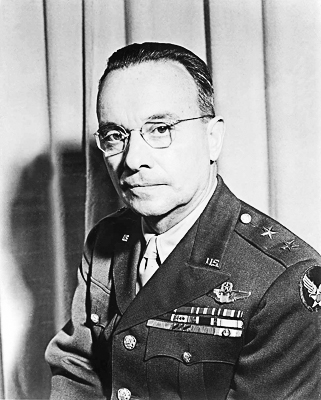
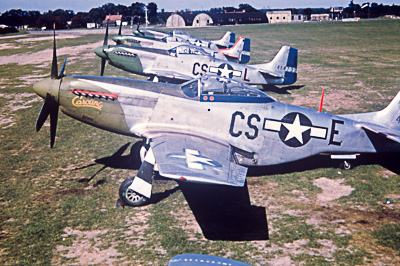
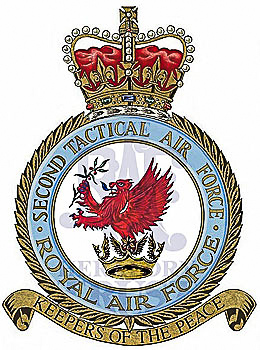
The 9th USAAF originated on 8 April 1942 and by 1944 was a tactical fighter command unit engaging enemy forces in Europe. After his appointment, Lt. Gen. Brereton expanded the ninth including accepting medium bombers from the 8th USAAF. By the time of Choo Choo, the ninth consisted of forty-five groups with more than 5,000 aircraft. Lt. Gen. Brereton’s men participated in Operation Pointblank (bomber offensive against German aircraft industry) and Operation Crossbow (operations aimed at German V-weapon sites) before supporting 2TAF and the invasion forces.
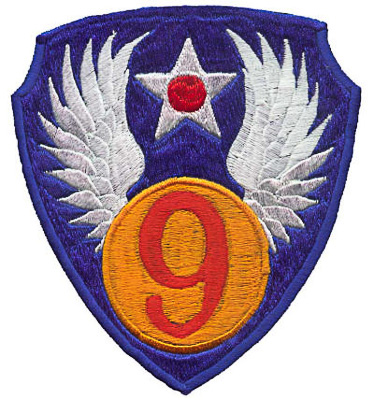
The 8th USAAF, or “Mighty Eighth” was established as VIII Bomber Command in early 1942 and by February 1944, it was renamed. At that time, the USAAF was reorganized, and Lt. Gen. Doolittle took over command of the eighth. Primarily using B-17s and B-24 Liberators, the Mighty Eighth’s responsibilities included strategic bombing by the heavy and medium bombers. The initial introduction of the P-51s to the eighth was to escort the bombers into Germany. (The P-51s were the first fighter planes with the range to get to and from Germany.) However, Lt. Gen. Doolittle released his fighter pilots to actively pursue and destroy enemy aircraft ensuring Allied air superiority over Europe.
One of the eighth’s successful fighter groups was the 359th with its three fighter squadrons (368th, 369th, and 370th). Entering combat in late 1943 and based at RAF East Wretham, aircraft from the fighter squadrons primarily flew escort missions. With the conversion from P-47 Thunderbolt aircraft to the P-51s in April 1944, the group was unleashed for direct strafing and bombing attacks on airfields, rail centers, locomotives, and rail lines. Between December 1943 and April 1945, the three fighter squadrons flew 346 missions over Europe with a total loss of 121 pilots while claiming 373 enemy aircraft in aerial combat and strafing attacks.
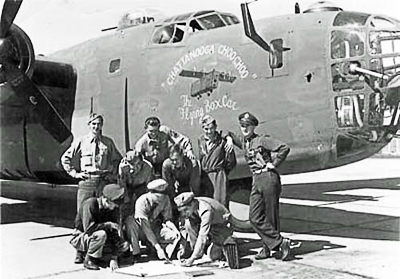
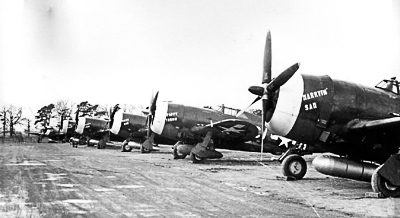
Other Choo Choo Missions
As part of Choo Choo, other areas of Europe were strategically targeted to break German logistics. Simultaneous to the western France attacks, 763 of Leigh-Mallory’s British 2nd Tactical Air Force fighter-bombers swept over northern France while 500 P-51s of the 8th USAAF flew over Germany destroying trains. On 25 May, three fighter groups of the 9th USAAF operated over the Rhineland while at the same time, more than 600 8th USAFF fighter-bombers targeted and destroyed trains traveling through Belgium.
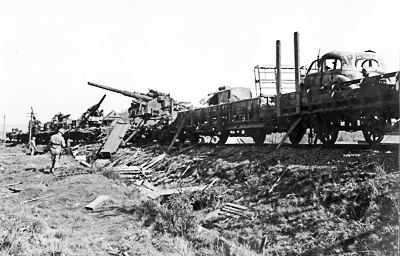
A major mission was conducted on 29 May when 571 planes of the 8th USAAF went into eastern Germany and Poland. During the June days leading up to the invasion, the 9th USAAF sent their planes into France to “soften up” the German transports.

There were two immediate by-products of these bombing and strafing missions. First, the young fighter pilots gained valuable experience in strafing techniques that was to show dividends after the Allied troops broke out of Normandy in July and August1. Second, the psychological effects on the French rail personnel resulted in large numbers of desertions by French train crews. One of the tactics used by the pilots was to drop belly tanks on stalled trains and then ignite the spilled fuel by strafing. As the French abandoned their rail jobs, German crews and forced labor were brought in but ultimately, railroad operations were drastically reduced even on undisturbed tracks.
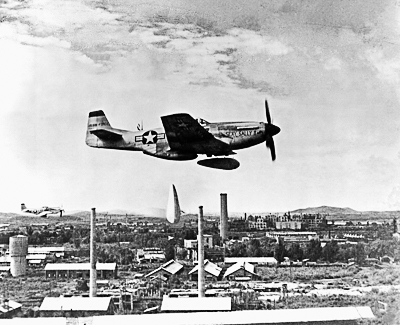
1 – My uncle was a P-47 “Thunderbolt” pilot. One of his recollections was of the young pilots who, after completing a strafing mission, went back to assess the damage. Many of these inexperienced pilots were killed by German anti-aircraft armaments once the element of surprise was gone. His policy was that once the mission was completed, always return to base.
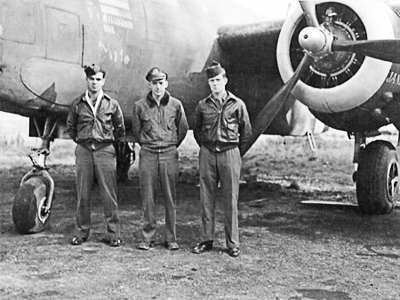
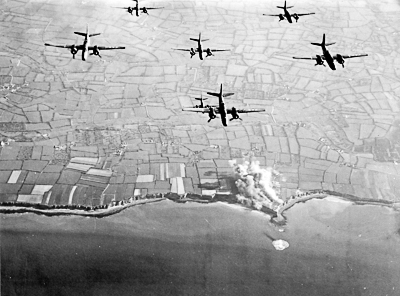
Operation Bodyguard
While Operation Chattanooga Choo Choo was successful at frustrating German efforts to move troops and armaments into position to meet the invasion head-on, there was another operation that contributed to the success of the Normandy invasion. Operation Bodyguard was the overall mission to deceive Hitler into thinking the “first” invasion would be a diversionary landing with the “real” invasion taking place at another location. One of Bodyguard’s operations was “Operation Double Cross” (click here to read the blog, The Double Cross System). Using highly effective double agents, Double Cross tricked Hitler into thinking the Normandy invasion would be the diversion with Pas-de-Calais as the site of the main invasion weeks later. (Gen. Omar Bradley called Operation Double Cross “the greatest deception of World War II.”)

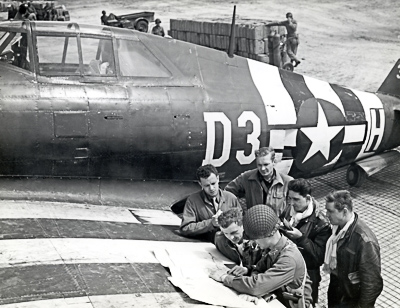
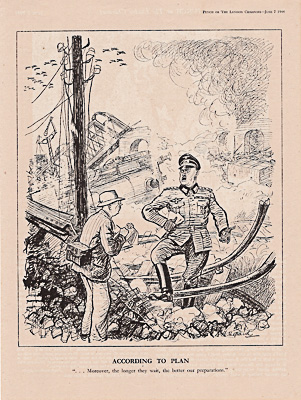
Hitler waited two weeks to move the bulk of his tanks and men to Normandy but by then it was too late. In the meantime, German commanders were frustrated by cuts in communication lines (due primarily to the efforts of the French resistance) and the destruction of roads, rail lines, rolling stock, and rail bridges (thanks to Operation Chattanooga Choo Choo).
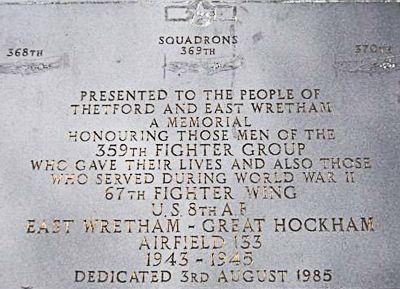
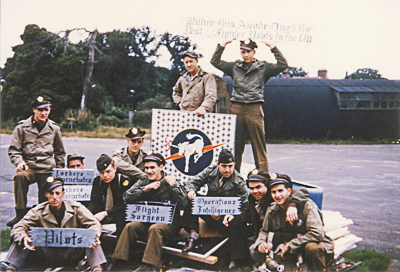
Next Blog: “The Strangest Battle of World War II”
Correspondence and Commentary Policy
We welcome everyone to contact us either directly or through the individual blogs. Sandy and I review every piece of correspondence before it is approved to be published on the blog site. Our policy is to accept and publish comments that do not project hate, political, religious stances, or an attempt to solicit business (yeah, believe it or not, we do get that kind of stuff). Like many bloggers, we receive quite a bit of what is considered “Spam.” Those e-mails are immediately rejected without discussion.
Our blogs are written to inform our readers about history. We want to ensure discussions are kept within the boundary of historical facts and context without personal bias or prejudice.
We average about one e-mail every two days from our readers. We appreciate all communication because in many cases, it has led to friendships around the world.
★ Read and Learn More About Today’s Topic ★
Fogg, Janet and Charlotte Baldridge. A Manifest Spirit: The 359th Fighter Group 1943−1945. Self-published: FA LLC, 2017.
Freeman, Roger. The Mighty Eighth: A History of the Units, Men and Machines of the US 8th Air Force. U.K.: Arms & Armour Press, 2004. First published by Doubleday, 1970.
Military code names from World War II: Click here.
Shores, Christopher. 2nd Tactical Air Force, Vol. 1: Spartan to Normandy, June 1943 to June 1944. Shepperton, U.K.: Ian Allen Publishing, 2004.
Smith, Jack H. 359th Fighter Group. Oxford: Osprey Publishing, 2012.
Wolmar, Christian. The Liberation Line: The Untold Story of How American Engineering and Ingenuity Won World War II. New York: Hachette Books, 2024.
Disclaimer:
There may be a chance that after we publish this particular blog, the video links associated with the blog are no longer accessible. We have no control over this. Many times, whoever posts the video has done so without the consent of the video’s owner. In some cases, it is likely that the content is deemed unsuitable by YouTube. We apologize if you have tried to access the link and you don’t get the expected results. Same goes for internet links.
What’s New With Sandy and Stew?
Sandy and I visited Copenhagen on the back end of our Baltic cruise. While it was her first time in the city, I had visited there many times in the 1960s while attending Viking Summer Camp. Our big excursion at the end of the six-week camp stay was the trip to Copenhagen and sites around the city. The highlight of our excursion was Tivoli Gardens. As an eleven-year-old, experiencing the hundred-year-old rollercoaster was a huge excitement! After our high school graduation in 1973, I returned to Copenhagen with my good friend Harry M. We visited Tivoli and rode the same coaster I had been on seven years earlier. Unfortunately, as an eighteen-year-old, I did not experience the same thrills I recalled from my time as a Viking camper.
The first ride Sandy and I went on after entering the park was the 150-year-old roller coaster. It hadn’t changed one iota. The line wasn’t long, and we jumped into the car, strapped ourselves in, and took off. With Sandy next to me I felt twelve-years-old again and after the first dip, flashed back to 1967.
I promised Sandy a smorgasbord of Danish pastries while in Copenhagen – another fond memory of a pre-teenage boy. Unfortunately, I was not able to fulfil this promise as we did not come across many pastry shops – perhaps during the past fifty years people decided to eat healthier? I guess we will just have to go back to Paris and visit our favorite boulangeries.
Thank you to all of you who subscribe to our bi-weekly blogs. It seems there isn’t a day that goes by where we don’t increase our readership. Please let your history buff friends and family members know about our blog site and blogs.
Someone Is Commenting On Our Blogs
Thanks to Suzanne A. for reaching out to us regarding our 2022 blog, Murder by Willful Neglect. Suzanne lives in Germany in a village close to the former Velpke children’s home (between Wolfsburg and Helmstedt). She did not know the story of the home and its connection to her village. After reading the blog, Suzanne began to investigate and found information that made her very uncomfortable. She is grateful that her view on local history is now clearer.
I am always encouraged when people like Suzanne write to us with these types of comments. It tells me that we are accomplishing one of our goals in writing these blogs over the past twelve years.
If there is a topic you’d like to see a blog written about, please don’t hesitate to contact me. I love hearing from you so keep those comments coming.
Share This:
Follow Stew:
Find Stew’s books on Amazon and Apple Books.
Please contact Stew directly for purchase of books, Kindle available on Amazon. Stew.ross@Yooperpublications.com or Contact Stew on the Home Page.
Shepherd.com is like wandering the aisles of your favorite bookstore.
Do you enjoy reading? Do you have a hard time finding the right book in the genre you enjoy? Well, Ben at Shepherd.com has come up with an amazing way to find that book.
Shepherd highlights an author (like me) and one of their books. The author is required to review five books in the same genre. So, if a reader is interested say in cooking, they can drill down and find specific books about cooking that have been reviewed by authors in that category. Very simple.
If you like to read, I highly recommend you visit Shepherd.com. If you do, please let me know what you think and I will forward Ben any suggestions or comments you might have.
Click here to visit Shepherd’s website.
Click the books to visit Stew’s bookshelf on WWII.
Check out Stew’s bookshelf on the French Revolution.
Please note that we do not and will not take compensation from individuals or companies mentioned or promoted in the blogs.
 Walks Through History
Walks Through History
Copyright © 2024 Stew Ross








